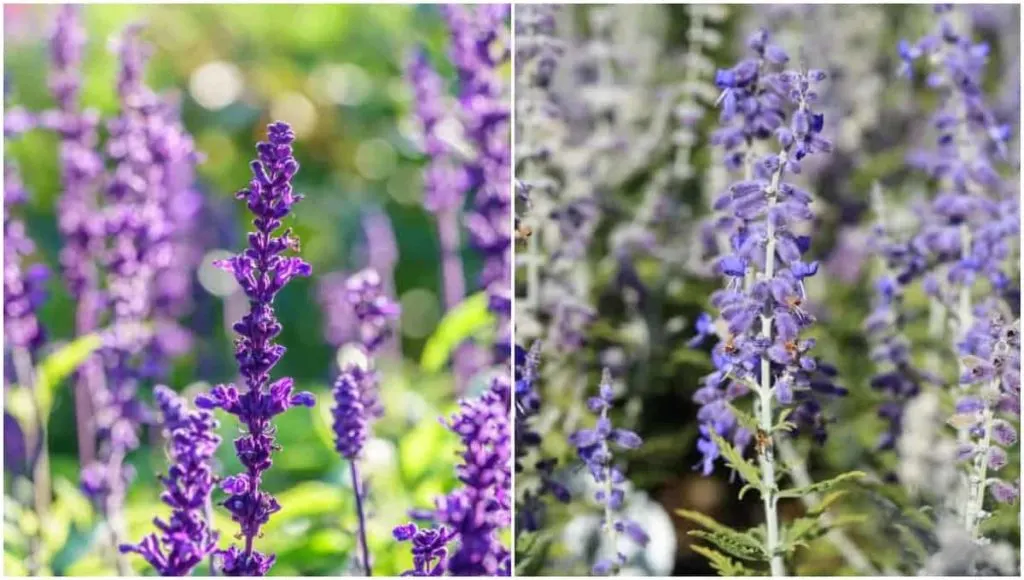
Have you ever come across a plant that looks eerily similar to lavender, but just doesn’t fit the profile?
Maybe the leaves are an odd shape, or the crushed flowers don’t have that quintessential calming scent.
Or perhaps it’s not suitable to grow lavender in your location or particular planting spot, but you want to grow something that gives the same impact.
As it turns out, there are several lavender lookalikes out there – and some that even have the same culinary and medicinal uses.
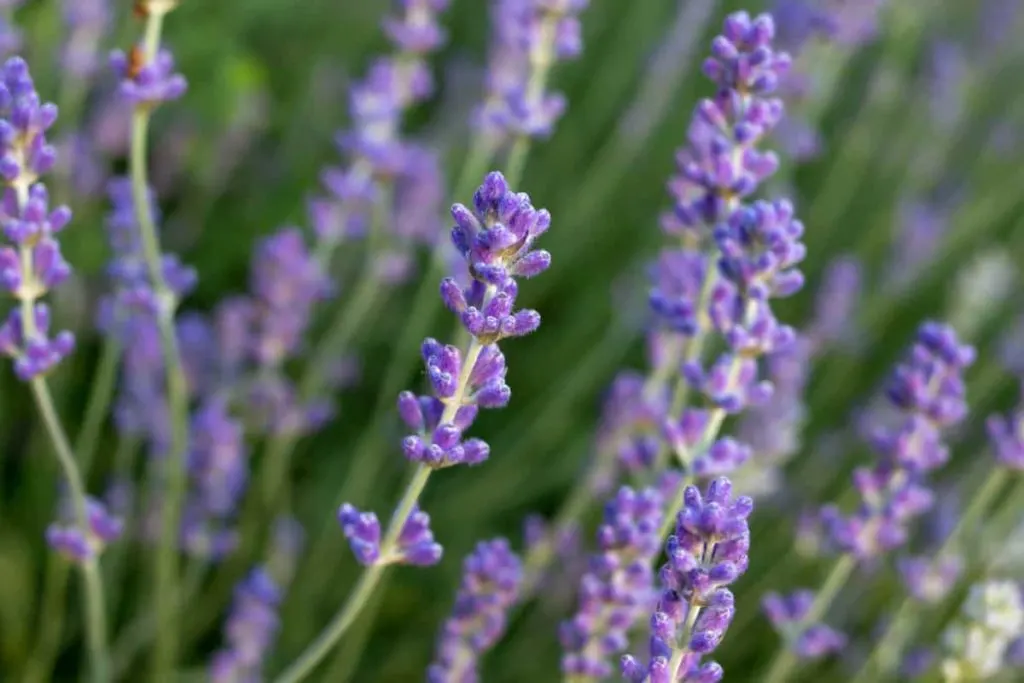
Related Reading: How To Grow A Lavender Hedge (& 12 Reasons Why You Should)
These six plants are tough, hardy and pretty plants that deserve a spot in any garden. Plant instead of lavender, or plant a few with lavender, for a spectacular show of foliage and flowers that are also great pollinator attractors.
1. Russian Sage
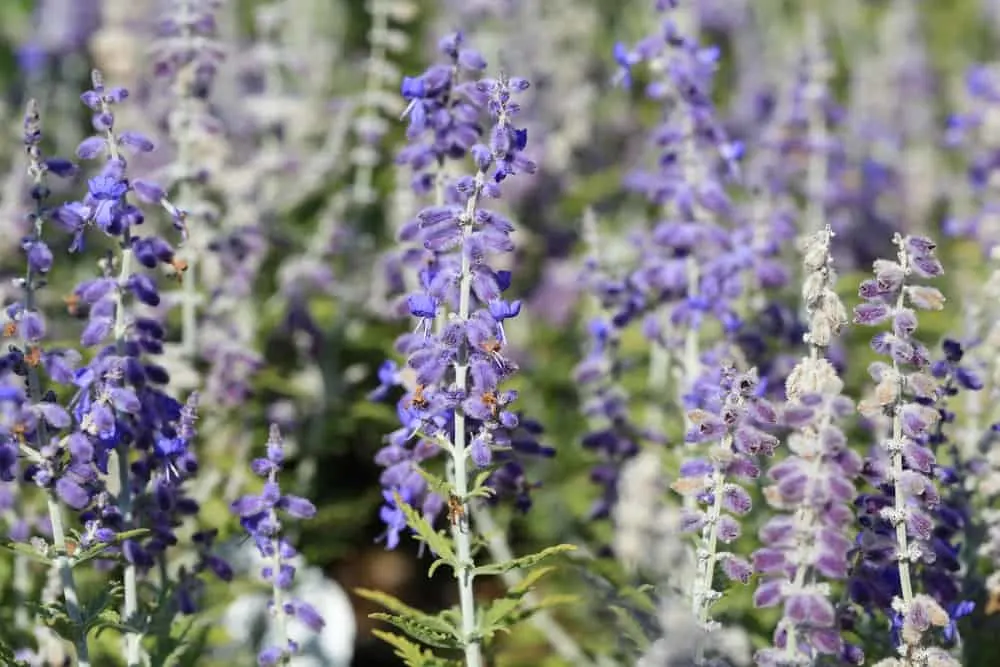
Out of all the plants on this list that look similar to lavender, Russian sage (Perovskia atriplicifolia) is by far the closest match.
Like lavender, it’s a clump-forming perennial with silver-grey foliage, white stems and long spikes that feature small mauve flowers. It dies down in winter (to avoid any frost) and grows out in spring to reach a height of four to five feet.
Russian Sage can be used as a replacement for lavender in the garden lined along a pathway or in a flower bed along the border. Also, like lavender, it has highly aromatic leaves that are useful in repelling insects like aphids, whitefly and cabbage worms when grown in a vegetable garden.
Russian sage is useful as a pollinator and its tolerance of salt makes it perfect for coastal gardens. It is hardy in USDA Zones 5-10 and is particularly drought tolerant once established.
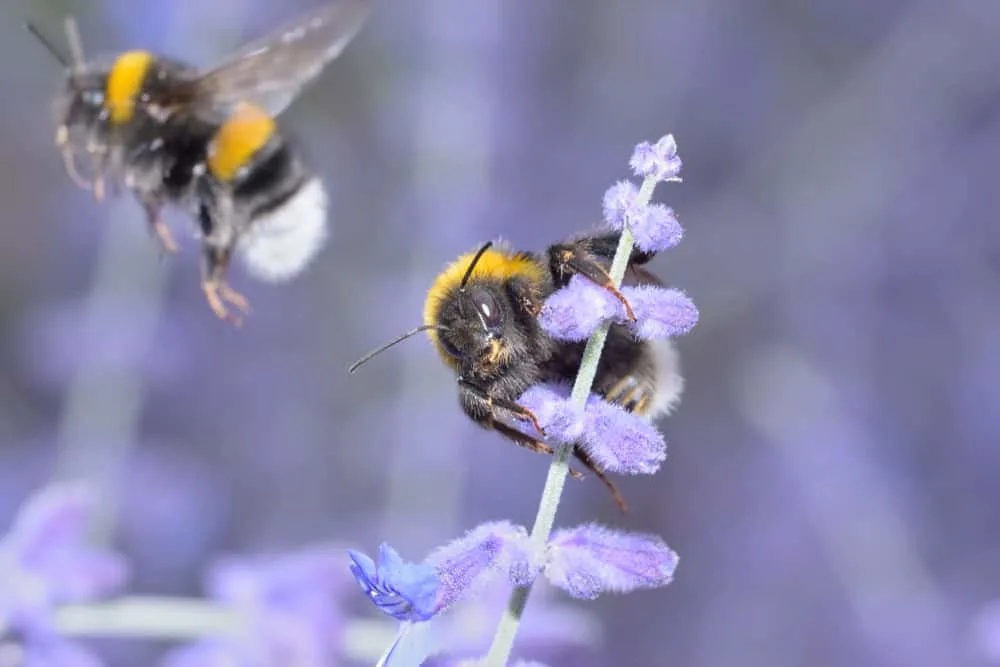
Don’t be fooled by this plant’s common name. Russian sage is not considered a true sage as it does not belong to the genus Salvia. It also does not come from Russia but is native to Afghanistan, and is also found in Iran, Pakistan and Tibet. It was named by a Russian botanist after a Russian governor (Perovskia).
Russian sage has similar uses in the household as lavender. The flowers are dried and used in potpourri, and the fresh flowers are used to garnish desserts and salads.
The leaves are not edible but can be used to repel insects, particularly around animals as they keep away ticks, fleas and ants.
Growing tips
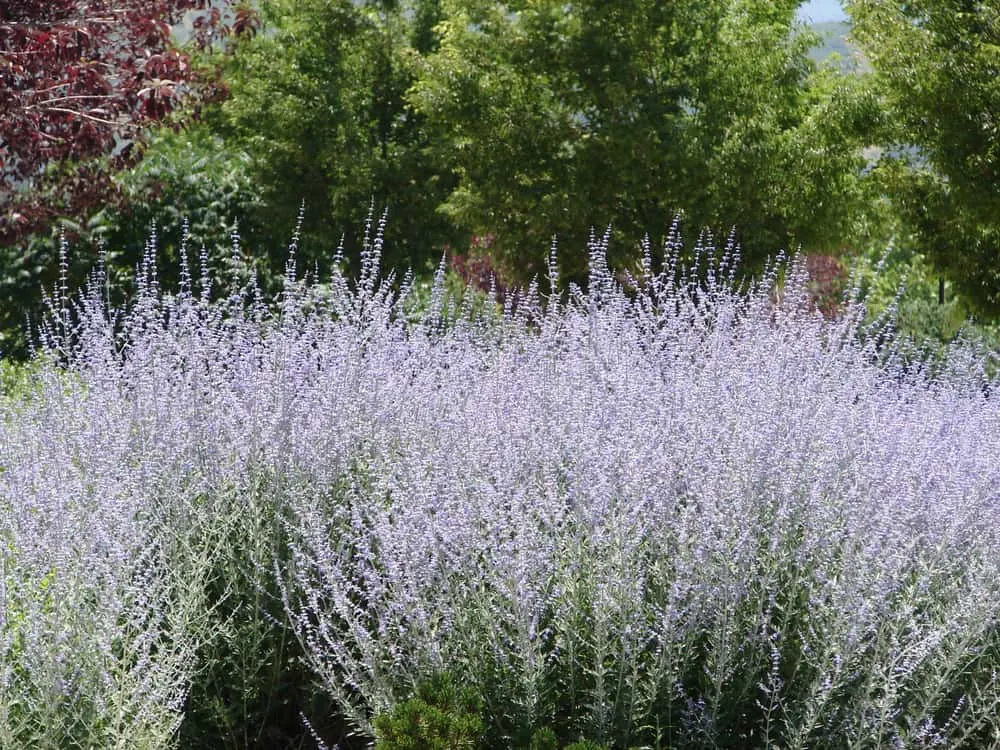
Russian sage needs a sunny position and well-composted soil that drains well. Plants in too much shade will get leggy. Water regularly when establishing new plants but don’t overwater later on.
In spring when the new leaves appear, cut back the old stems to the lowest set of leaves. Keep the plants neat by pruning in summer to keep their shape and promote more upright growth. This also encourages new growth and more flowers.
They can be divided in spring to get even more plants. Cuttings can also be taken in spring, dipped into rooting hormone, and planted until well-rooted.
2. Hyssop
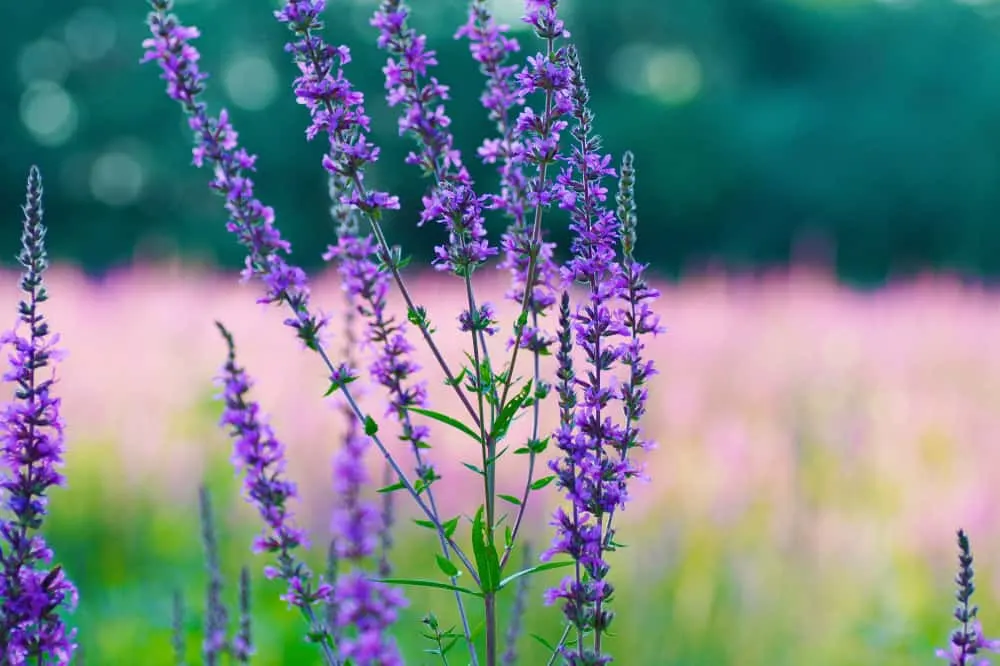
Like lavender, Hyssop (Hyssopus officinalis) is a perennial that belongs to the mint and sage family (Lamiaceae) – mostly aromatic perennial herbs.
Hyssop has many similarities to lavender. The leaf shape, in particular, is quite similar but the leaf color is greener than lavenders’. In summer, whorls of small flowers in violet-blue, pink and sometimes white form at the end of long woody stems.
Although they have similar flowers and growing patterns, hyssop from the genus Hyssopus should not be confused with Anise hyssop – botanically Agastache foeniculum. True hyssop has medicinal benefits that Anise hyssop does not. The biggest difference is in the leaf shape, with true hyssop having more lavender-like leaves.
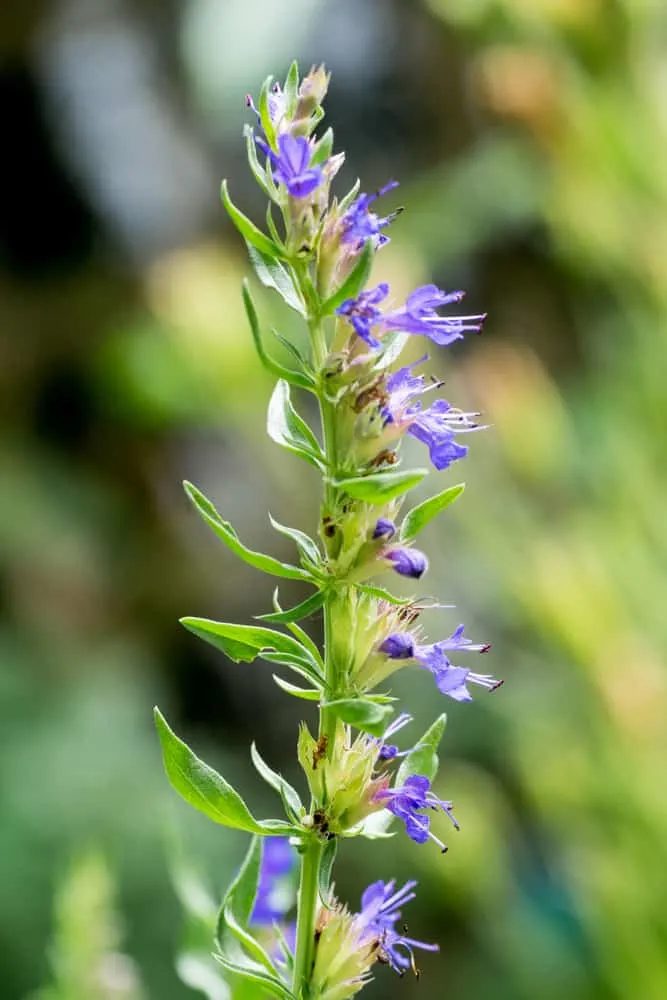
Hyssop is used to aid respiratory problems and intestinal and liver conditions. Young fresh leaves can also be used in salads, soups and stews. Plus, it is said to reduce the richness of fatty foods and aid digestion.
The plant is a compact plant and does well in garden beds. It is a good pollinator plant and grows well in containers if you choose a pot big enough to accommodate its large root system.
While lavender will grow best in USDA zones 5-8, hyssop can tolerate colder conditions and does not need winter protection, growing in USDA zones 3-11. It grows to around 25 inches tall and half as wide.
Growing tips
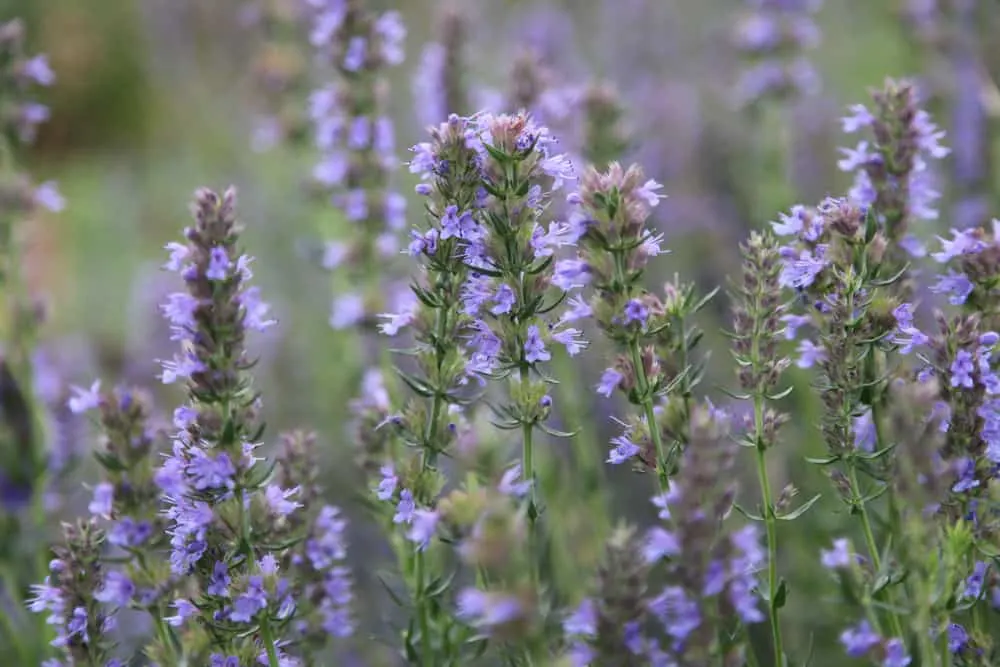
Hyssop will grow in full sun or partial shade and needs well-draining soil enriched with organic matter. Like lavender, they prefer drier conditions and require minimal water once established.
Divide these plants in the fall. Seeds can also be collected and stored when the seed capsules are completely dry, for use the following season.
Prune plants heavily in spring and again after flowering to keep their bushy shape. Feed with an organic fertilizer once or twice during the growing season for the best lavender-like flowers.
3. Catmint
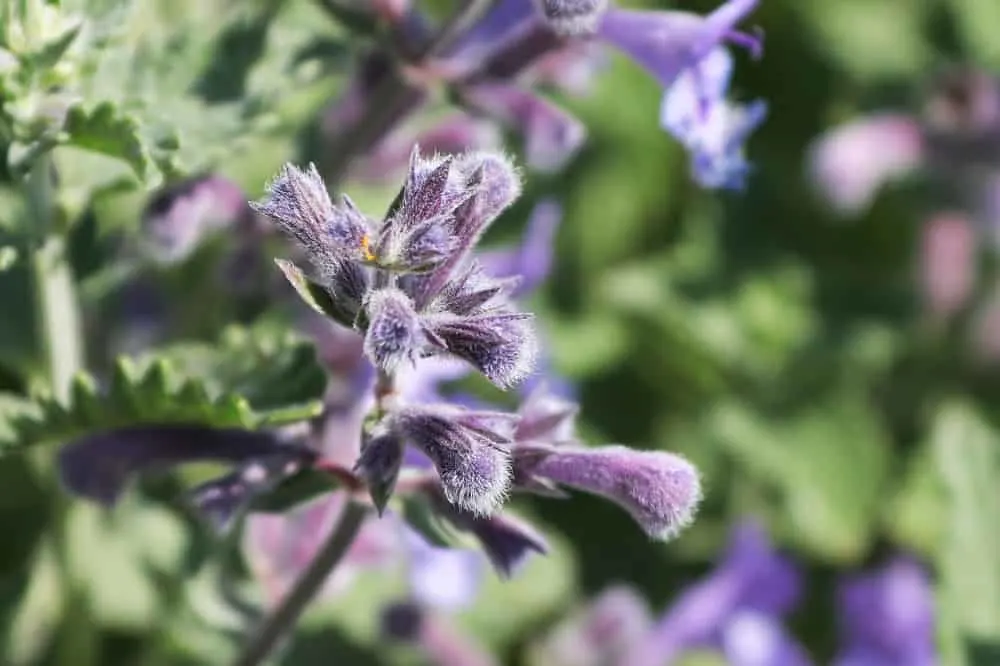
Catmint is a herbaceous perennial that grows in similar conditions to lavender. It is also drought tolerant. This plant has sturdy stems with grey-green heart-shaped leaves and flower spikes of lavender-colored flowers.
The genus name Nepeta is in reference to the village of Nepi, north of Rome in Italy. There are around 250 species in the genus native to Europe, Asia and Africa. They grow best in well-draining soil in beds or pots (USDA Zones 4 – 8).
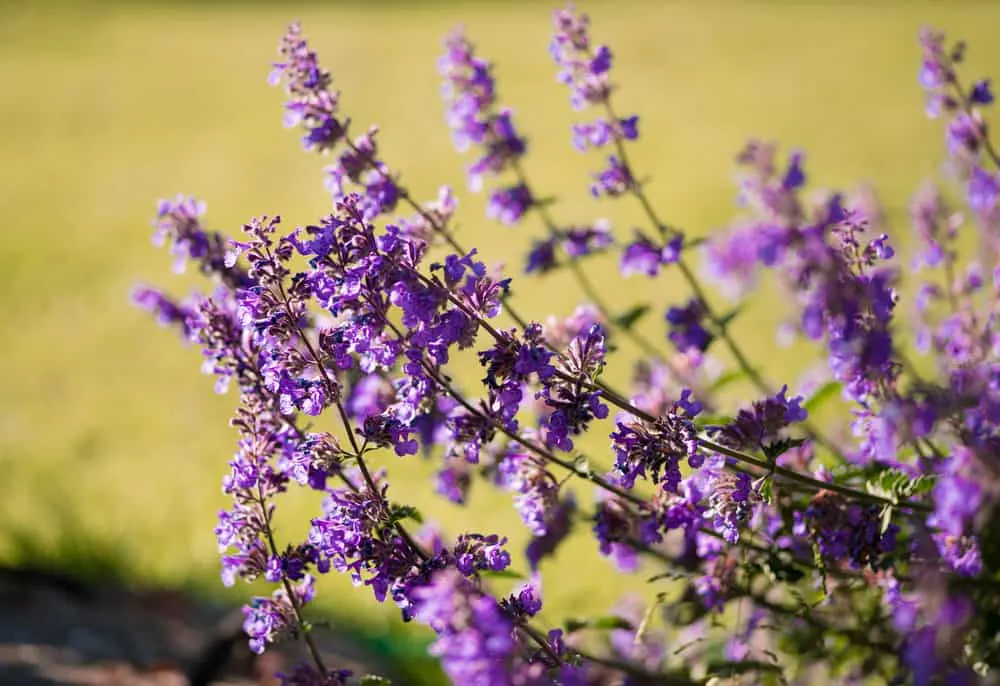
Catmint and Catnip are often confused. Although they belong to the same mint family Nepeta, they are not the same plant. Catmint (Nepeta mussinii) is similar in growth habit to lavender with mauve flowers while catnip (Nepeta cataria) is not as neat and usually has white flowers. Many cats enjoy nibbling on catmint, but don’t love it as much as catnip.
The flowers and leaves of Catmint can be used to make tea. It has a calming effect with a slightly minty taste and sweet fragrance that enhances soups and sauces.
Growing tips
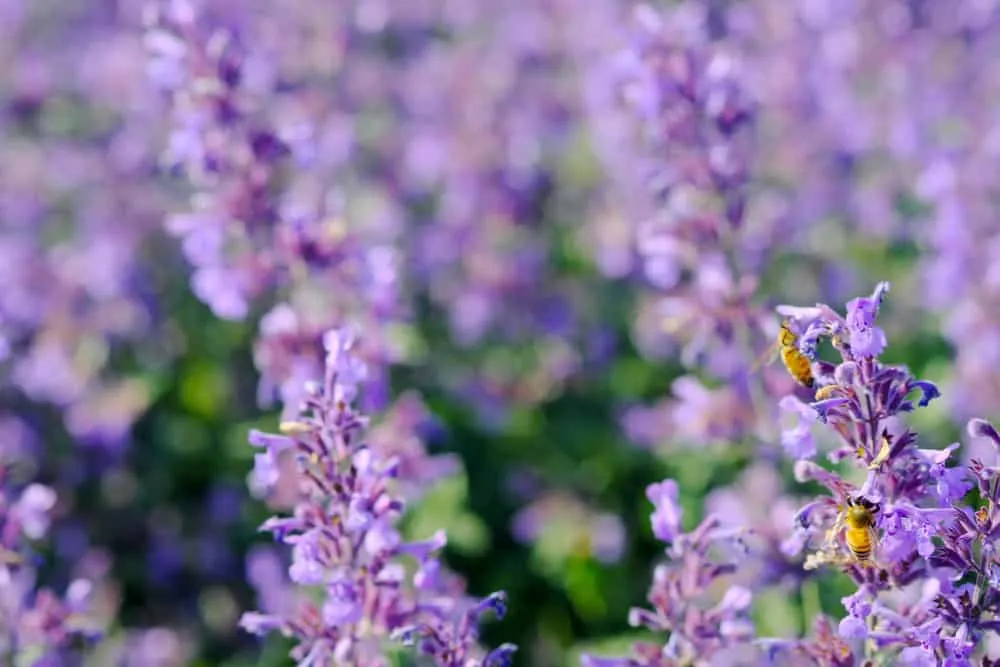
Grow in a sunny position and plant in spring or fall for the best results. Plant at least 12 inches apart to avoid overcrowding. Enrich the soil with plenty of organic matter before planting and water well while establishing the plants.
As they grow, they become extremely drought and heat tolerant and will not need much water or fertilizer.
Prune faded blooms to encourage more flowering during summer. Cut back heavily in fall when the plants die back to set the plant up for a good spring season. Thin out if they become too crowded or, like other mints, become too vigorous and potentially invasive.
4. Rosemary
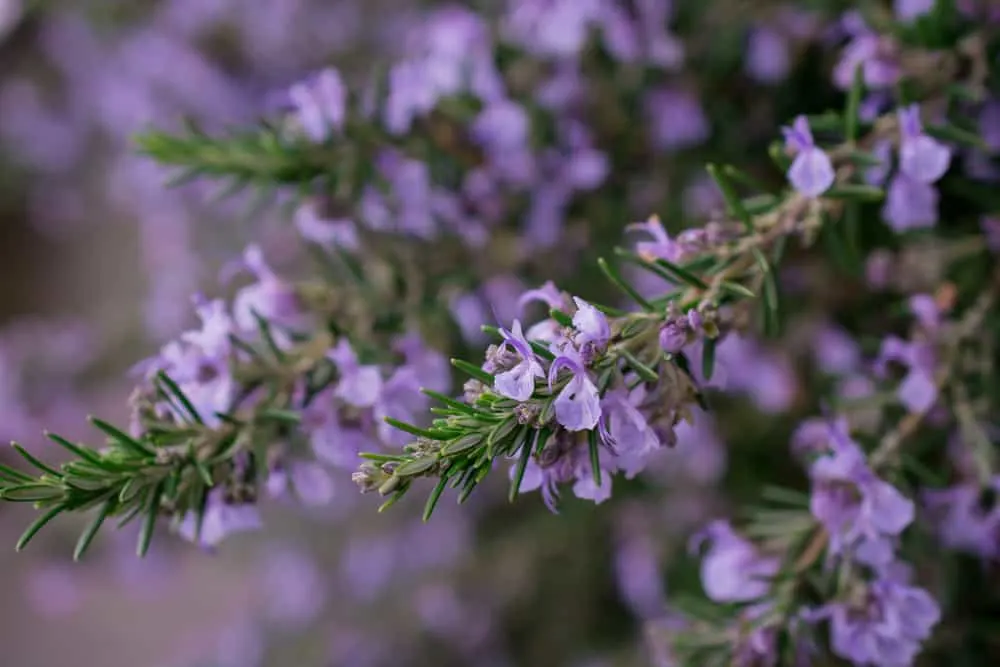
Another tough herb with varieties looking similar to lavender is rosemary (Rosmarinus officinalis).
The leaves are thin and needle-like on grey stems. In winter and spring, pale purple-blue flowers appear in clusters on tall stems. Like lavender, rosemary has its origins in the Mediterranean where its Latin name Rosmarinus is translated to Dew of the Sea in English.
Once established in the garden, it doesn’t need much water, doesn’t mind heat or cold, and doesn’t grow too vigorously. Essentially, it’s one of the most carefree plants you can find.
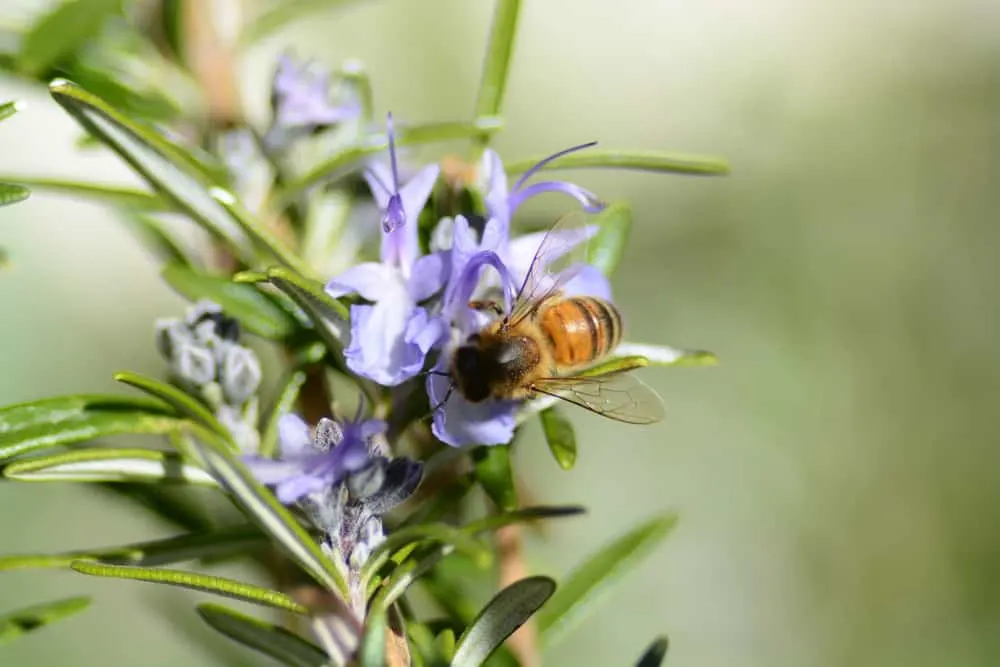
Rosemary is a popular herb in the kitchen. It makes sturdy herbal skewers for meat and vegetables, goes well with chicken and lamb, and adds flavor to roasting vegetables. It also has several medicinal uses, labeled a tonic herb good for improving concentration, memory and stress levels.
If you brush past it in the garden, rosemary releases an aromatic fragrance, as does lavender. For this reason, it is often planted along pathways.
As they have the same growing requirements, it will also grow well alongside lavender.
Related Reading: 12 Lavender Companion Plants (& 4 Plants To Keep Far Away)
Rosemary does well in containers and can be grown in USDA Zones 8-11. It doesn’t appreciate the cold and needs to be protected in winter. Alternatively, look for a variety that is cold-tolerant.
Growing tips
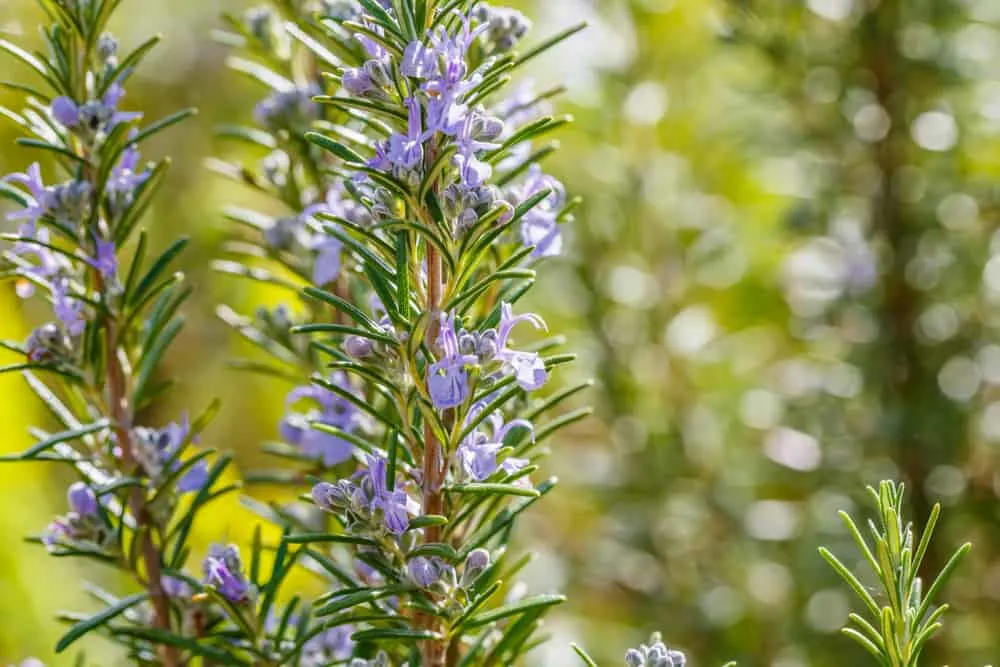
Plant rosemary in full sun and well-draining for the best results. They like poor quality soil, but will generally grow well in any type of soil. As its name ‘dew of the sea’ suggests, it grows well along the coast, not minding salty air.
Unless trimmed regularly as a hedge, rosemary will need a good prune after flowering in spring or to keep it neat. It can grow up to six feet tall and almost as wide, needing space to grow. It attracts pollinators and is virtually disease-free. The aromatic leaves also repel insects which makes it a good companion plant, particularly for carrots.
Related Reading: How To Grow A Rosemary Hedge (& 10 Reasons Why You Should)
5. Purple Salvias
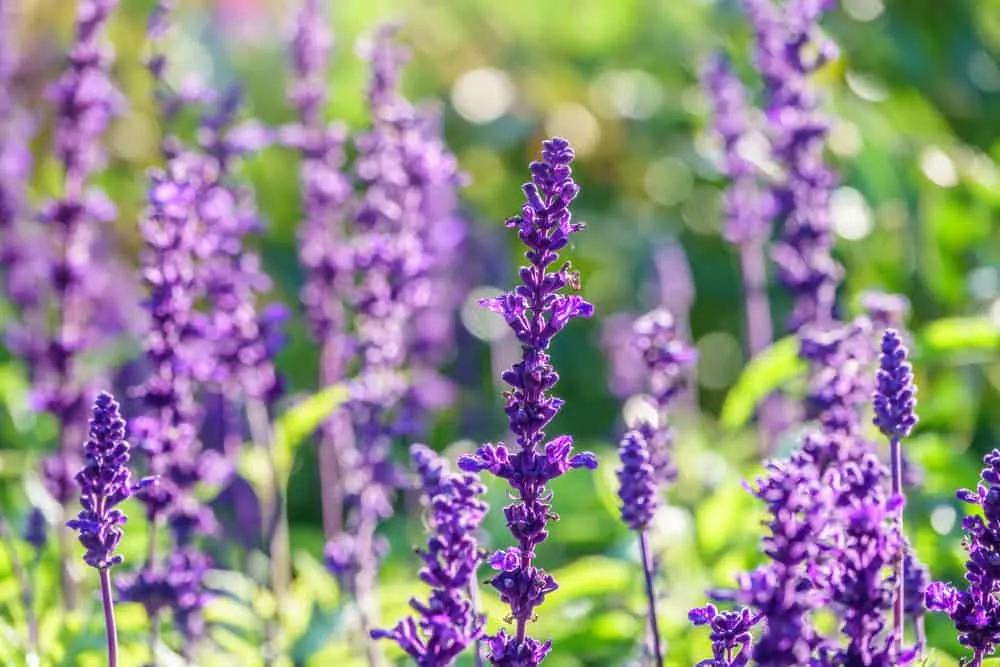
Within the family Lamiaceae, the largest genus of plants at nearly 1000 species is Salvia. Like lavender, some salvias are herbaceous perennials that belong to the mint tribe.
One lavender look-alike is Salvia officinalis, sage or common sage, with grey foliage and blue-ish purple flowers.
Like lavender, this sage is native to the Mediterranean and has a long list of culinary and medicinal uses. ‘Officinalis’ even refers to a plant with a long-established archive of medicinal value.
Perhaps the most similar to lavender is Salvia lavandulifolia, named for exactly that reason. This salvia is compact with narrow greyish leaves and blue flowers in summer.
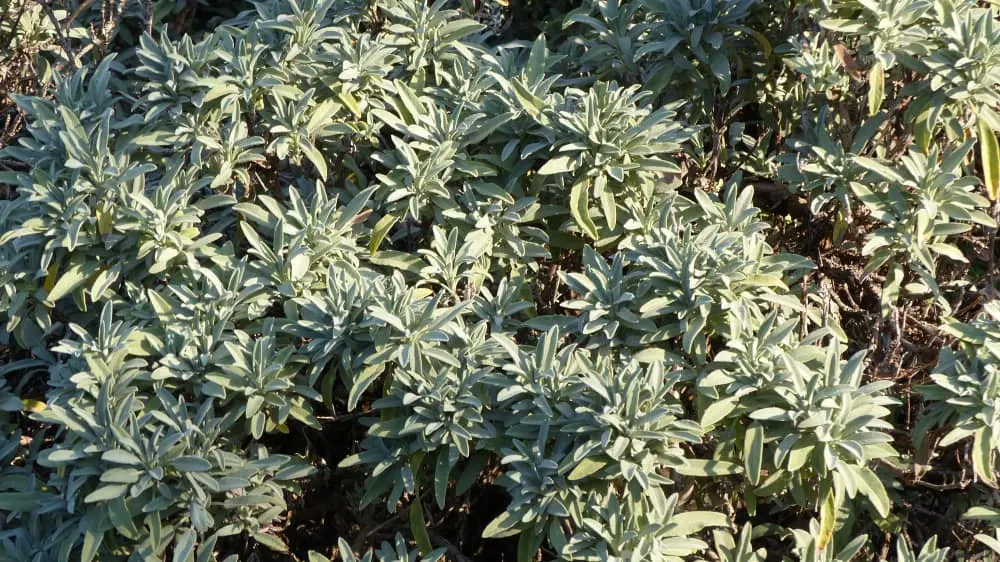
Different cultivars vary in size, have different colored and shaped leaves, with flowers from lavender or pink, to white and deep purple. Some are cold and frost hardy and others prefer the heat of a more tropical climate.
Growing tips
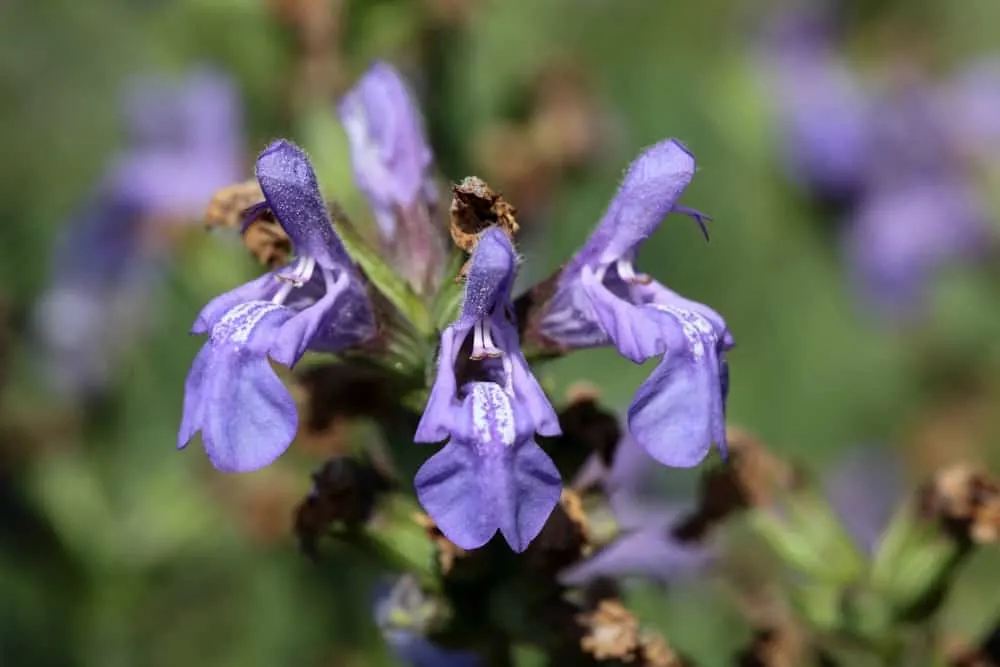
Choose a sunny position in well-draining soil enhanced with organic material like compost. Once established, they are drought and heat tolerant. Regular feeding and deadheading will enhance their look.
At the end of the season, allow them to set seed and prune back any woody stems. Divide in spring every few years before the new growth begins. Apply a thick layer of compost too to set them off for the spring season.
6. Basil
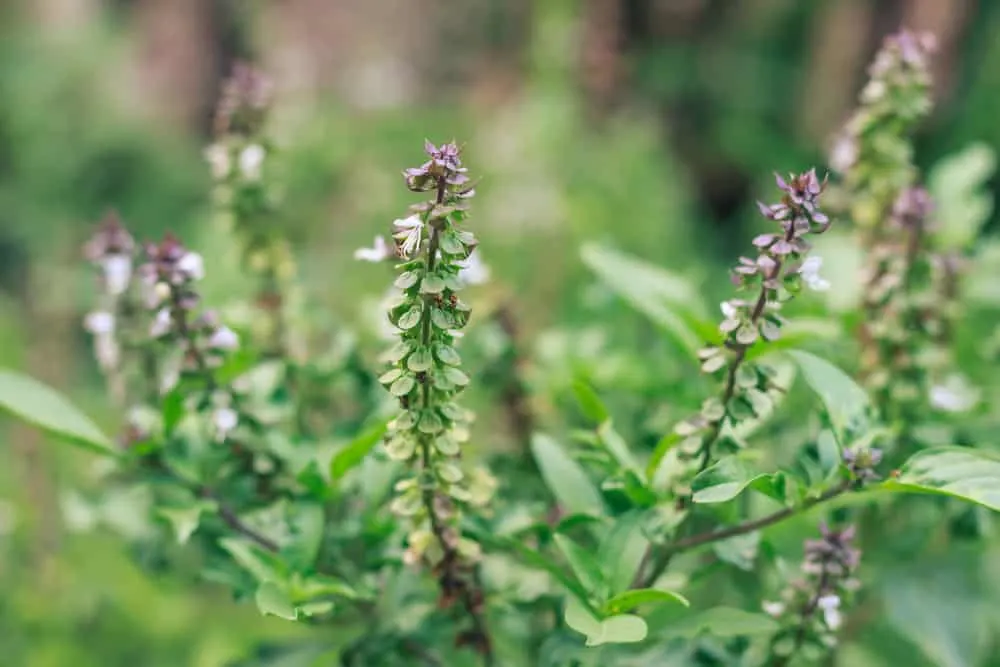
The basil with the most similar looks to lavender is Holy basil (Ocimum tenuiflorum or Ocimum sanctum), also known as perennial basil or Tulsi most Indian languages. As its name suggests, it is an important herb in Indian culture and is used in religious ceremonies.
Like lavender, Holy basil is an aromatic plant that attracts many bees to its spikes of mauve flowers. The leaves are either green or purple. Although not as commonly used as sweet basil is in cooking, the leaves can be chopped up and used in sauces and pestos with other herbs.
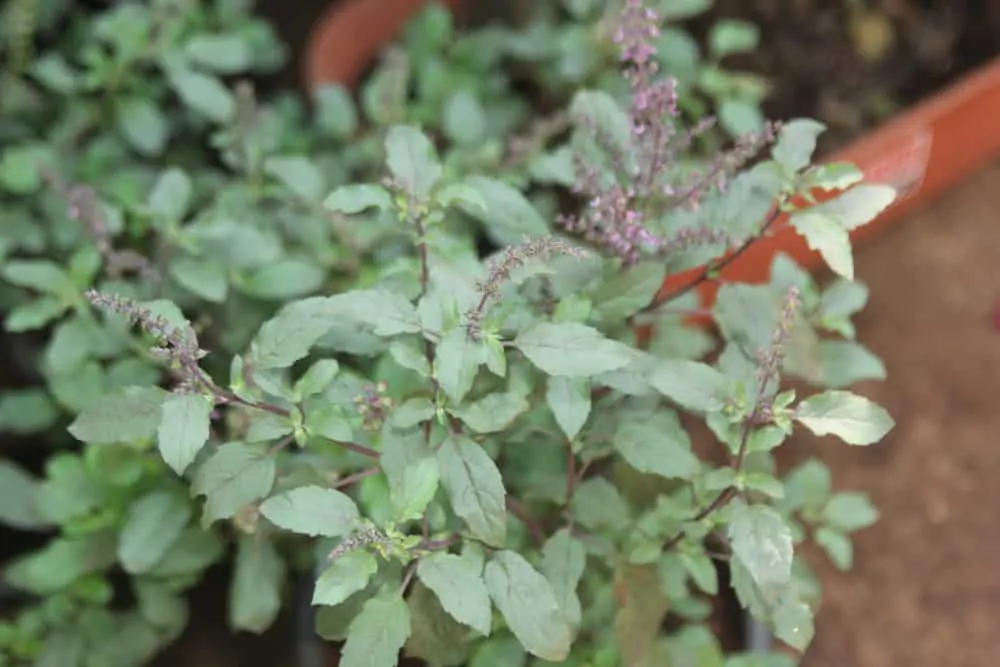
Holy basil is a good garden plant that repels pests like aphids, flies and mites while improving the flavor of the fruits and vegetables planted next to it.
Unlike other plants on this list, Holy basil is not cold-hardy and does best in tropical and subtropical climates. Those outside tropical regions can also grow it indoors as a houseplant.
Growing tips
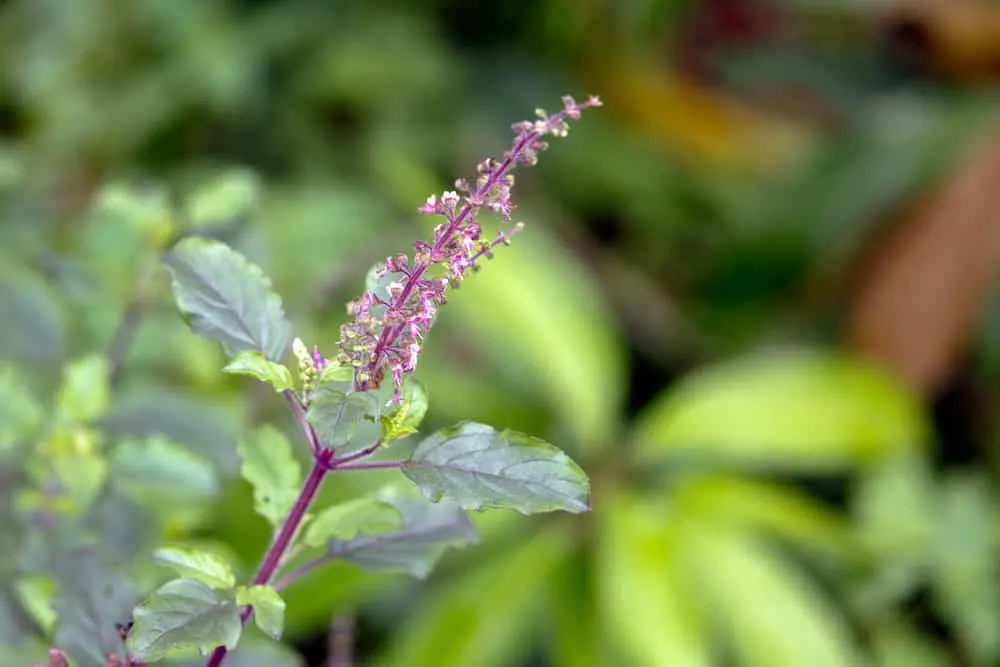
Although holy basil prefers a sunny position in the garden, it can take a bit of dappled shade, and should be sheltered from the wind. Plant in well-composted soil that has excellent drainage and water regularly.
Unlike lavenders, perennial basils need plenty of water. They also need potassium-rich fertilizer at least once a month to ensure healthy leaves and flowers. Cut off dead flowers to encourage new flowers and pinch out growing tips to stimulate bushier growth.
To keep them compact and neat, prune just before spring and in mid-summer. Only prune back to the semi-hardwood – not the hardwood. Take cuttings at any time and place them in a glass of water until rooted for more plants.
Read Next: How To Grow A Lavender Tree: The Most Stylish Tree For Your Patio
